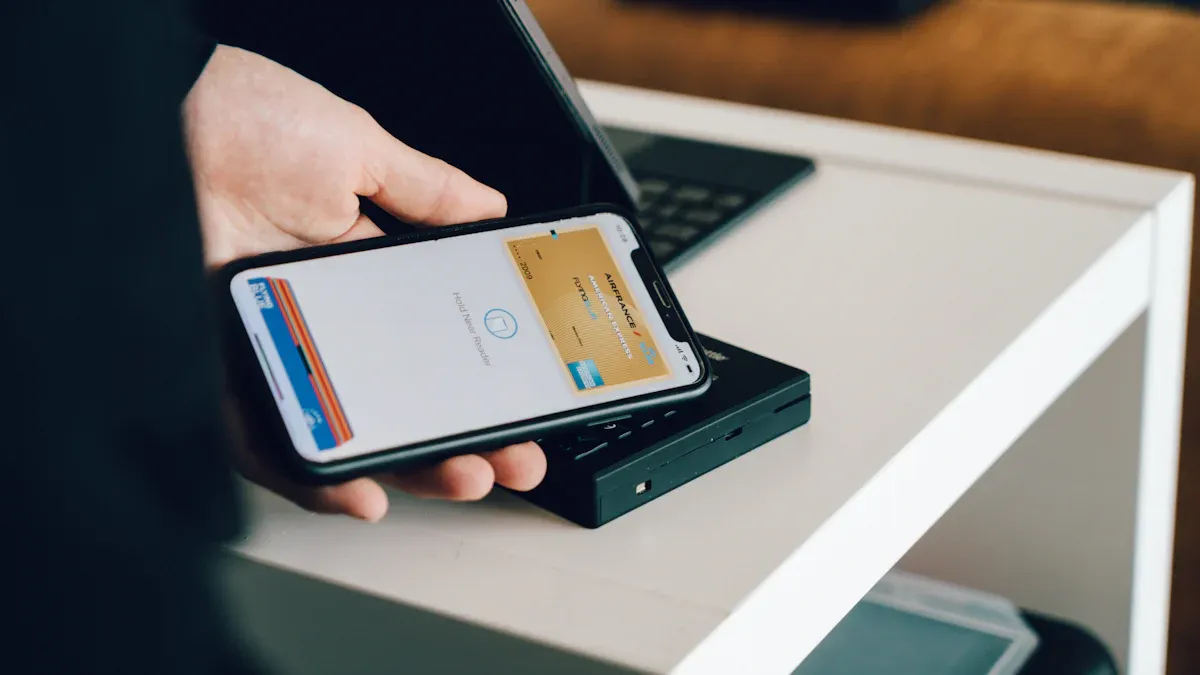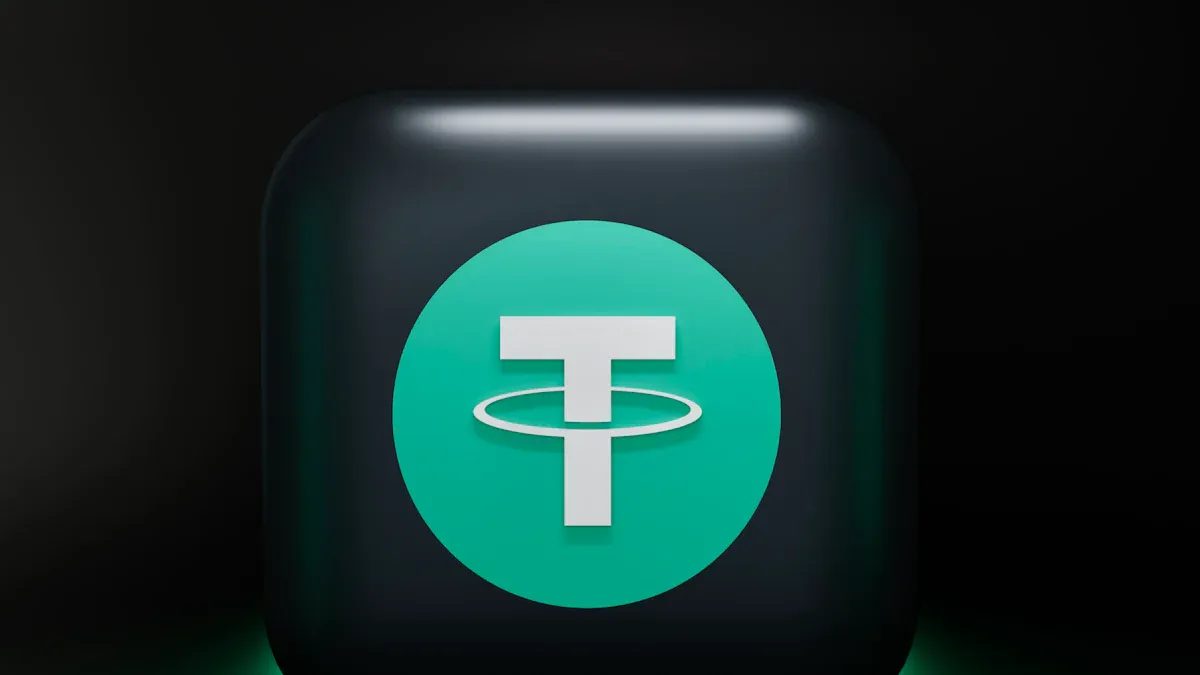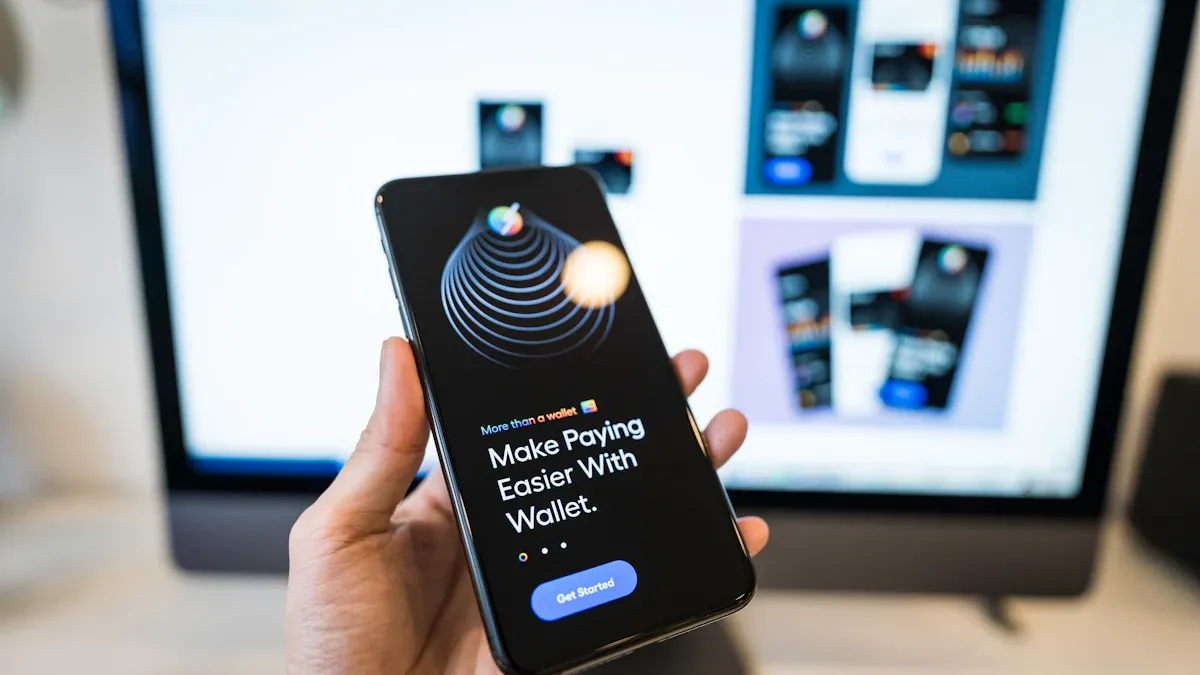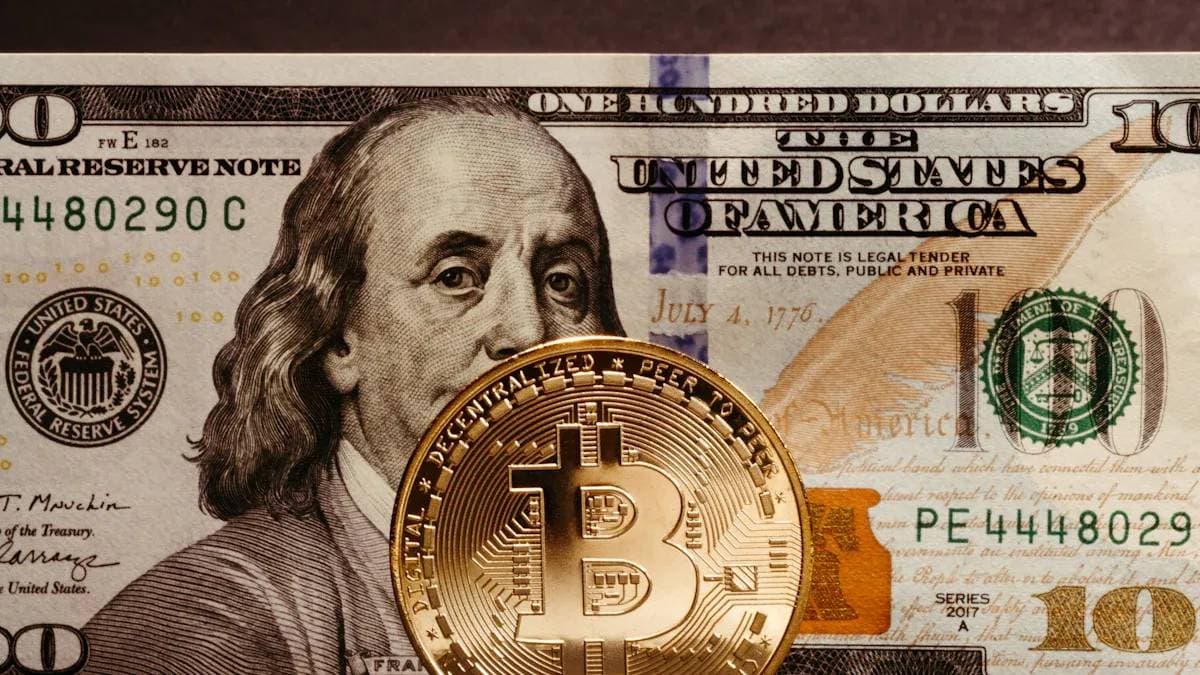- EasyCard
- Trade
- Help
- Announcement
- Academy
- SWIFT Code
- Iban Number
- Referral
- Customer Service
- Blog
- Creator
5 USDT Transfer Tips for Achieving Instant Payments

Image Source: unsplash
Achieving instant payments with USDT transfers is not out of reach; the key lies in mastering the right methods.
Are you still enduring days-long waits for traditional bank wire transfers? A $1,000 cross-border remittance can incur bank handling fees as high as $50. In contrast, USDT transfers using the TRC-20 network typically cost less than $2 and arrive in just a few seconds.
This tremendous efficiency and cost advantage allows you to completely bid farewell to delay frustrations and experience true global real-time commerce.
Key Takeaways
- Choose the TRC-20 network for USDT transfers for fast speed and low fees.
- Reasonably set miner fees to accelerate transaction speed.
- Use platform internal transfers to achieve zero fees and instant arrival.
- Avoid network congestion periods to save fees and speed up transfers.
- Carefully verify addresses and networks before transferring to ensure fund security.
Tip 1: Choose the Right Network to Enable Instant USDT Payments

Image Source: unsplash
Selecting the correct blockchain network is your first and most critical step to achieving instant USDT payments. USDT exists on multiple blockchain networks, but their speed and cost differences are huge. Currently, the most mainstream choices are TRC-20 and ERC-20.
TRC-20 vs. ERC-20: Speed and Cost Comparison
Simply put, TRC-20 is the standard on the TRON network, while ERC-20 is on the Ethereum network. You can intuitively see their differences through the table below:
| Network Standard | Average Transaction Speed | Typical Transfer Fee (USD) |
|---|---|---|
| TRC-20 | About 3-5 seconds | $1 - $2 |
| ERC-20 | About 15-30 seconds (longer during congestion) | $5 - $30+ (higher during congestion) |
The table clearly shows that the TRC-20 network has an absolute advantage in both speed and cost. This is why it is so popular.
Why is TRC-20 the top choice for most people?
- Lightning-fast confirmation: Transactions are usually completed in seconds, offering an experience close to traditional electronic payments.
- Extremely low fees: Compared to ERC-20 fees that can reach tens of dollars, TRC-20 costs are almost negligible.
- Wide support: The vast majority of mainstream exchanges and wallets support TRC-20 USDT, making deposits, withdrawals, and usage convenient.
- Simple operation: The TRON network and its ecosystem wallets offer a very user-friendly experience, easy even for beginners.
How to Select the Network in Exchanges or Wallets
Selecting the network is very simple; whether withdrawing from an exchange or receiving in a wallet, the process is similar.
When withdrawing from an exchange, follow these steps:
- Log in to your exchange account and go to the “Assets” or “Wallet” page.
- Find the “Withdraw” or “Withdrawal” function and select USDT.
- In the “Transfer Network” or “Mainnet Type” options, clearly select TRC20 (TRON).
- Enter the recipient address and amount, then submit.
When receiving USDT in a wallet, do this:
- Open your wallet app, for example, Trust Wallet.
- Click the “Receive” or “Deposit” button.
- Search and select USDT in the token list, ensuring it is labeled with the TRC20 network below.
- Copy your receiving address (usually starting with the letter “T”) or display the QR code to the payer.
Important Reminder: Before transferring, confirm multiple times that the withdrawal network you selected exactly matches the recipient’s address network. For example, you can only transfer from the TRC-20 network to a TRC-20 address; otherwise, your assets will be permanently lost.
Tip 2: Optimize Miner Fees to Accelerate Transactions
After selecting the right network, the next step is learning how to “cut in line.” In the blockchain world, miner fees (Gas Fee) are your “priority pass”. Setting them reasonably can make your transaction stand out even during congestion.
What Are Miner Fees and Their Role
You can think of miner fees as the “service fee” paid to blockchain network processors. When you initiate a transfer, miners (or validators) need to pack your transaction into a block for confirmation.
Miner fees have two core roles:
- Incentivize miners: This fee is the reward for miners, encouraging them to contribute computing power to validate transactions and maintain network security.
- Prevent congestion: Charging fees effectively prevents malicious flooding with spam transactions, ensuring normal network operation.
Most importantly, miners prioritize processing transactions with higher fees because it earns them more revenue. This is the “higher bidder wins” principle. The higher your fee, the faster your transaction gets packed.
How to Set Custom Miner Fees
When you urgently need a transfer to arrive quickly, especially on the ERC-20 network, manually increasing the miner fee is the most efficient method. Most wallets provide preset options for different speeds.
Taking the mainstream wallet MetaMask as an example, you will see options like “[Slow]”, “[Market]”, “Fast” during transfer.
- Select “Fast”: The wallet automatically sets a competitive fee for you, ensuring quick confirmation.
- Use “Advanced Options”: For ultimate speed, click “Advanced” to manually enter a higher Gas price. You can refer to real-time suggested fees from tools like Etherscan Gas Tracker to make the best decision.
Note: Setting miner fees too low may cause your transaction to wait for a long time or even fail.
Miner Fee Setting Tips for Different Wallets
Different networks and wallets have slightly different acceleration logic.
- For ERC-20 network: Wallets like MetaMask are very flexible. If your account lacks enough ETH for miner fees, it even allows using other tokens like USDT in your account to pay, ensuring smooth transactions.
- For TRC-20 network: TRC-20 transfers (smart contract operations) mainly consume “Energy” resources. Although the TRC-20 network is usually fast and low-cost, during extreme network busyness, ensuring your wallet has sufficient “Energy” or TRX balance is crucial. You can freeze TRX to gain more Energy, ensuring your transactions are always prioritized.
Tip 3: Make Good Use of Wallet and Exchange Acceleration Features

Image Source: pexels
Beyond the blockchain network itself, the trading platform you choose is also a key factor in transfer speed. An efficient platform can supercharge your transactions, while a slow one may cause you to miss opportunities.
Why Platform Processing Speed Is Also Critical
You need to understand that total transfer completion time = blockchain confirmation time + platform internal processing time.
The internal processing time of cryptocurrency exchanges or wallets is a key factor affecting total USDT transfer duration. Even if the blockchain confirms your transaction in seconds, the platform’s internal review, risk control, and broadcasting processes will add to the overall transfer time.
How to choose an efficient platform? When selecting a platform, focus on:
- Technical architecture: Platforms with strong technology and high liquidity process faster.
- User reviews: Positive feedback and efficient customer support are important indicators of platform reliability.
Use Address Book for One-Click Transfers
Manually entering or copy-pasting long wallet addresses is time-consuming and highly error-prone. A single mistake can lead to permanent asset loss. Using the wallet’s address book feature is a simple way to improve efficiency and security.
Taking the Biyapay wallet as an example, the address book feature offers multiple protections:
- Enhanced security: Save frequently used, trusted recipient addresses in the address book. This effectively prevents transfers to wrong accounts due to phishing or accidental errors.
- Improved efficiency: After saving addresses, next time you only need to select from the list for one-click transfers, greatly saving address verification time.
This layered security measure significantly reduces operational risks through address filtering and extra confirmation prompts for new addresses.
Use Platform Internal Transfers for Zero-Fee Instant Arrival
If you and the recipient happen to use the same platform (for example, both are Biyapay users), you have the ultimate shortcut to instant USDT payments: internal transfers.
Internal transfers do not go through the blockchain network but settle directly on the platform’s internal ledger. This means:
- Zero handling fees: No miner fees required.
- Real-time arrival: Funds transfer instantly, truly “seconds to account.”
In specific scenarios, this is undoubtedly the lowest-cost, fastest best choice.
Tip 4: Avoid Network Congestion and Choose the Best Timing
Just like highways get congested during peak hours, blockchain networks have “congestion” periods too. Transferring at the wrong time not only slows speed but also increases costs. Learning to observe network status and choose the best timing is a wise move for low-cost instant payments.
How to Use Blockchain Explorers to Judge Network Status
Blockchain explorers are your “real-time map” for observing network traffic. Tools like Etherscan (Ethereum) or Tronscan (TRON) let you easily judge if the network is busy.
Focus on these key metrics:
- Real-time Gas price: The most important indicator. Etherscan’s Gas Tracker shows current suggested fees. If prices are far above average, the network is congested.
- Pending transaction count: The total transactions in the pending pool reflects congestion level. Higher numbers mean longer queuing for your transaction.
- Network utilization: This percentage shows block space usage. Sustained above 50% usually signals the network is getting busy.
With data from these explorers, you can accurately predict network congestion and estimate required Gas fees, making smarter decisions to avoid unnecessary high fees.
Find the Best Transfer Time Windows
After mastering judgment methods, the next step is finding “golden times” for transfers. While not 100% predictable, historical data reveals patterns.
For the ERC-20 network, fee fluctuations are significant, making off-peak periods especially important:
- Daily lows: Usually UTC 10 PM to 4 AM. This corresponds to early morning in Asia and late night in Europe/Americas, with lower activity.
- Weekly lows: Weekends, especially Saturday and Sunday, with transaction volume typically 20%+ lower than weekdays. Many institutions and traders rest, keeping the network clearer.
For the TRC-20 network, its high throughput keeps fees low and speeds high most of the time (usually 3-5 seconds), but during extreme market activity, non-peak periods still ensure fastest processing.
By transferring during these “off-peak” periods, you can effectively reduce costs and greatly increase the probability of quick confirmation.
Tip 5: Ultimate Pre-Transfer Verification to Eliminate Accidents
The previous four tips help speed up, but this final step is your ultimate fund security line. Performing final verification before transfer is key to avoiding permanent asset loss or prolonged transaction stalls. Make this a habit.
Repeatedly Confirm Address and Network Match
This is the most error-prone and consequential part of cryptocurrency transfers. You must ensure the withdrawal network exactly matches the recipient address network. For example, TRC-20 USDT can only be sent to TRC-20 addresses.
When copy-pasting addresses, beware of these common errors:
- Missing characters: You may not select the entire long address during copy, losing some characters.
- Network mismatch: You may select ERC-20 network on the exchange but paste a TRC-20 address (starting with “T”). These networks are incompatible.
- Wrong address: You may accidentally paste a previously used old address or a completely unrelated one.
Severe Warning: Once you send ERC-20 USDT to a TRC-20 address or perform any cross-network transfer, your funds will be permanently lost with no recovery. Blockchain irreversibility means no customer service can retrieve the money.
Check Sufficient Native Token Balance
Another common transfer failure reason is insufficient “fuel” in the wallet. Initiating any blockchain transaction requires paying a miner fee (Gas Fee), which must be paid with the network’s native token.
- For Ethereum network (ERC-20) transfers: Your wallet must have enough ETH.
- For TRON network (TRC-20) transfers: Your wallet must have enough TRX.
How much is needed? Taking the more common TRC-20 network as an example, a USDT transfer typically consumes about 14 to 30 TRX as the fee. If your wallet has no TRX, even with plenty of USDT, the transaction will fail due to inability to pay the miner fee. Therefore, before transferring, check and ensure sufficient native token balance in your wallet.
You have now mastered the five core tips for instant USDT payments: choose the right network, optimize miner fees, use platform features, avoid congestion, and carefully verify. Applying these comprehensively can significantly save costs in cross-border payments and other scenarios, as shown in the following cases:
| Profession | Location | Payer | Benefits of USDT |
|---|---|---|---|
| Graphic Designer | Argentina | European Client | Instant receipt |
| Blockchain Developer | India | Client | Direct invoicing in USDT |
| Content Creator | Nigeria | Client | Avoid PayPal restrictions and high exchange spreads |
| Remote Marketing Team | Southeast Asia | Team Members | Manage payroll with stablecoins |
Start practicing these tips now to truly enjoy the efficiency and convenience of stablecoin payments.
FAQ
What if I accidentally transfer USDT to the wrong network?
You will be unable to recover the funds. Blockchain transfers are irreversible. This is why you must repeatedly verify the network and address before transferring. This step is the final line of defense for your fund security.
Why does my “instant” transfer still show as pending?
There are usually two reasons. First, the blockchain network may be temporarily congested. Second, the platform you use is conducting internal review. If the wait is too long, contact platform customer service for help.
Is there a minimum amount limit for USDT transfers?
The blockchain network itself has no minimum transfer limit. However, most exchanges set a minimum withdrawal amount, such as $10 USDT. You will usually see relevant prompts on the withdrawal page before operating.
*This article is provided for general information purposes and does not constitute legal, tax or other professional advice from BiyaPay or its subsidiaries and its affiliates, and it is not intended as a substitute for obtaining advice from a financial advisor or any other professional.
We make no representations, warranties or warranties, express or implied, as to the accuracy, completeness or timeliness of the contents of this publication.




Contact Us
Company and Team
BiyaPay Products
Customer Services
BIYA GLOBAL LLC is a licensed entity registered with the U.S. Securities and Exchange Commission (SEC No.: 802-127417); a certified member of the Financial Industry Regulatory Authority (FINRA) (Central Registration Depository CRD No.: 325027); regulated by the Financial Industry Regulatory Authority (FINRA) and the U.S. Securities and Exchange Commission (SEC).
BIYA GLOBAL LLC is registered with the Financial Crimes Enforcement Network (FinCEN), an agency under the U.S. Department of the Treasury, as a Money Services Business (MSB), with registration number 31000218637349, and regulated by the Financial Crimes Enforcement Network (FinCEN).
BIYA GLOBAL LIMITED is a registered Financial Service Provider (FSP) in New Zealand, with registration number FSP1007221, and is also a registered member of the Financial Services Complaints Limited (FSCL), an independent dispute resolution scheme in New Zealand.




















